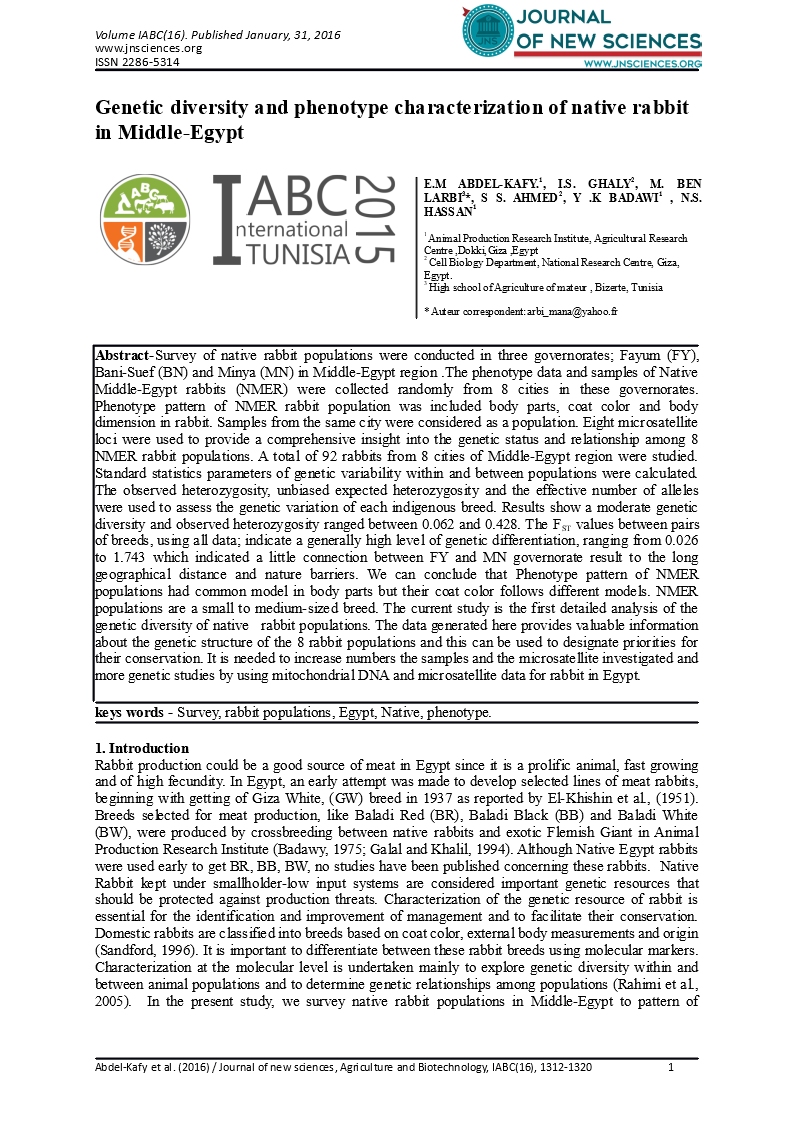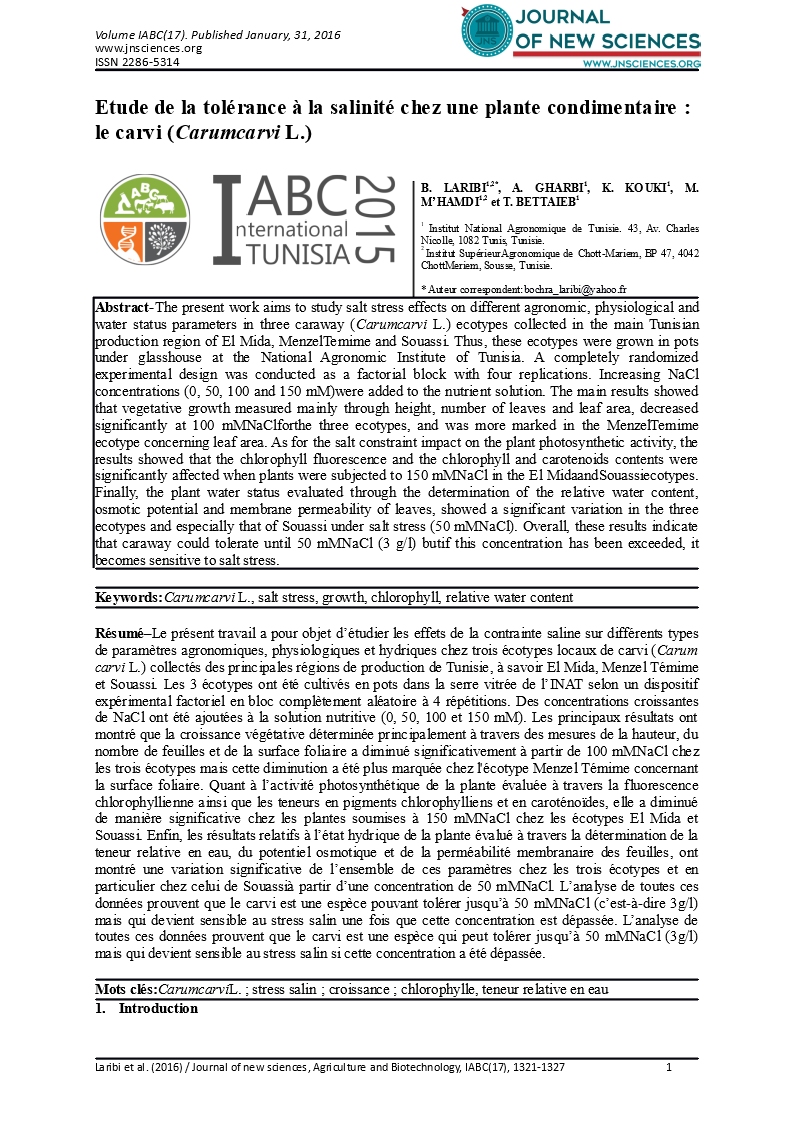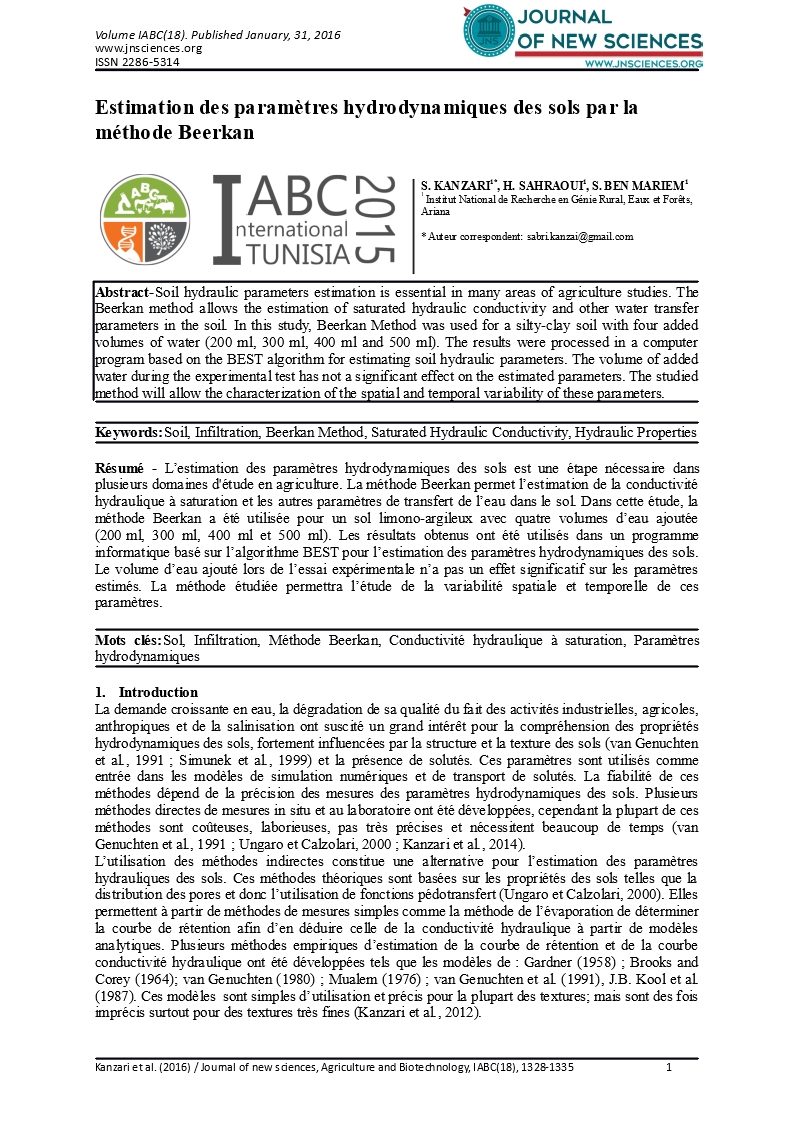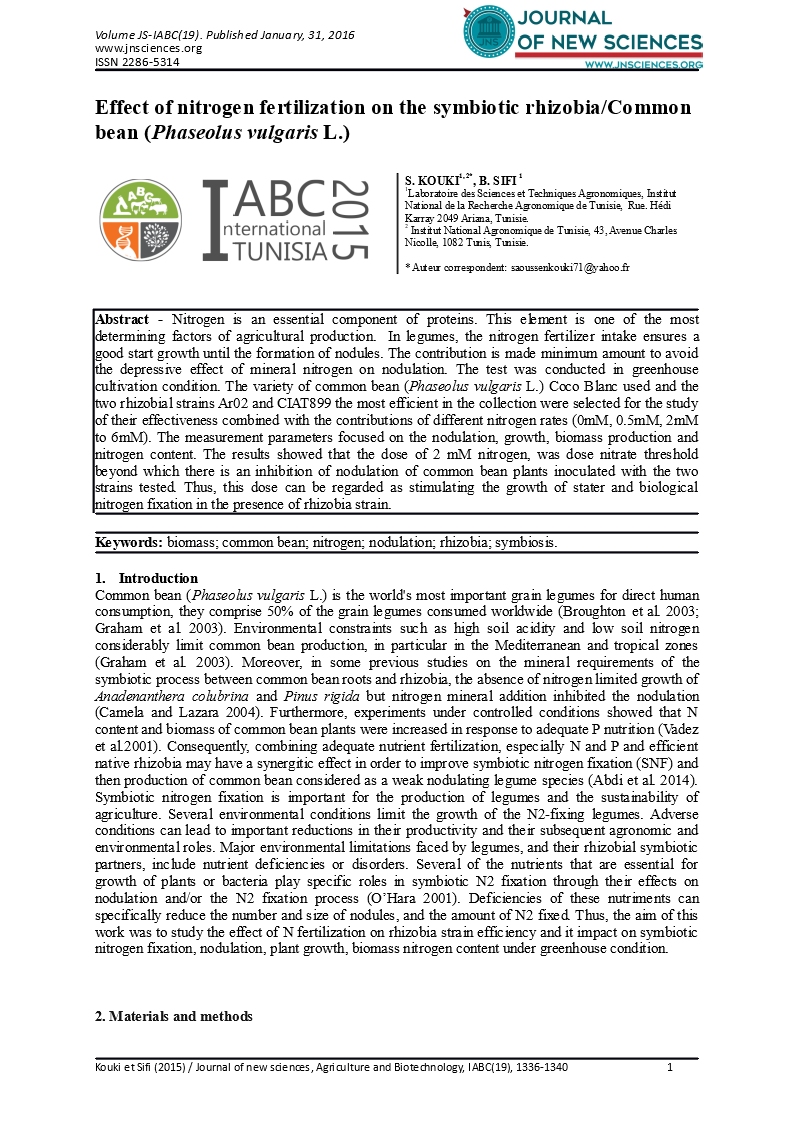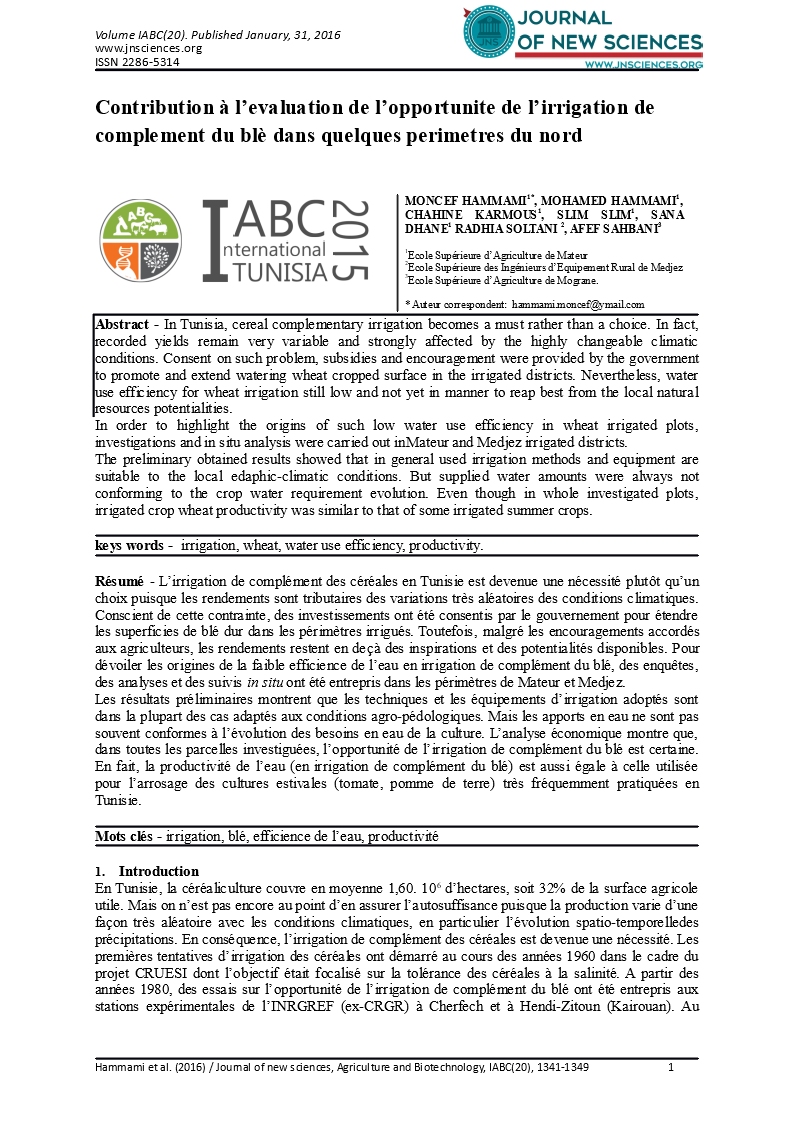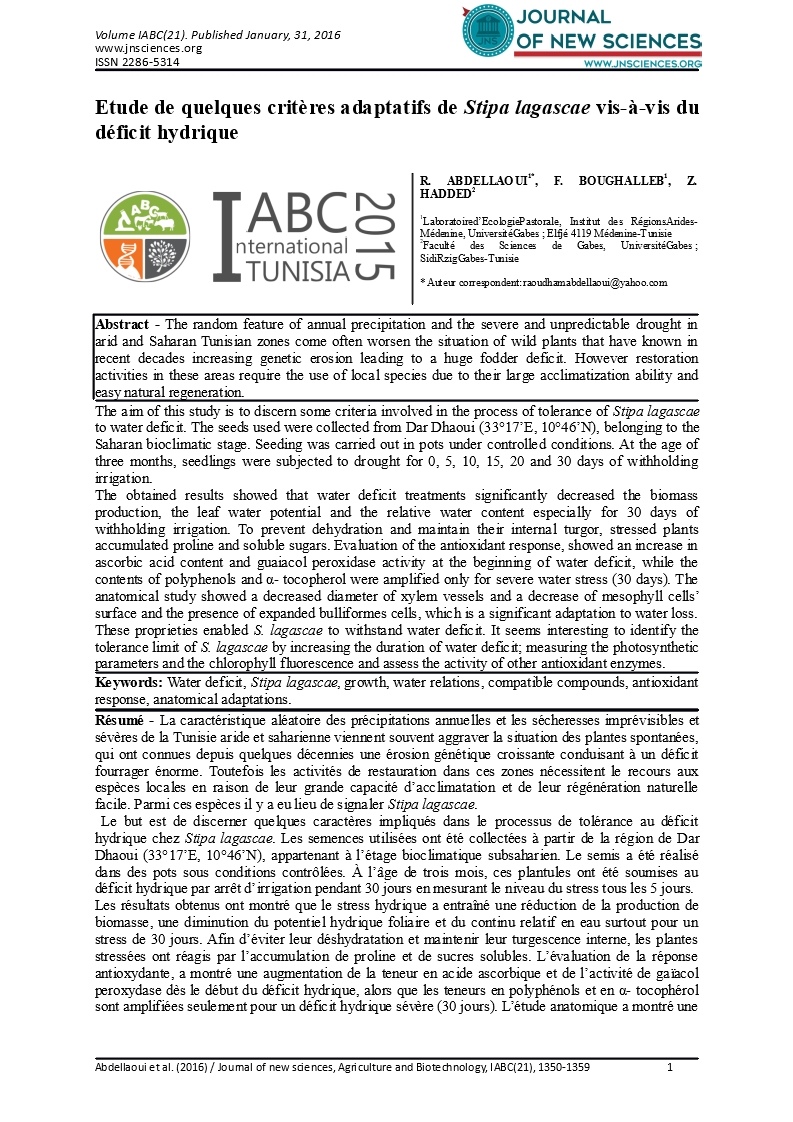- Category: Volume Spécial (Conférence IABC 2015)
- Hits: 8019
Salt tolerance of new olive varieties issued from a Tunisian breeding crosses
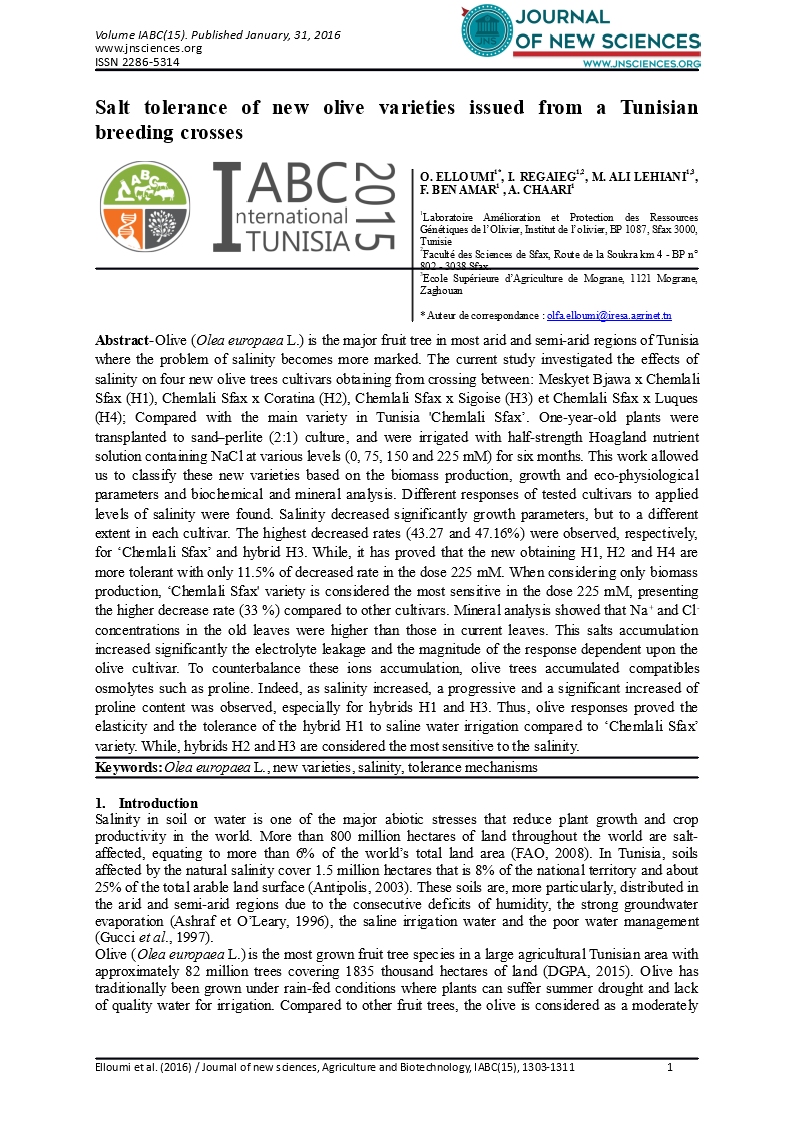
O. Elloumi1*
I. Regaieg1,2
M. Ali Lehiani1,3
F. Ben Amar1
A. Chaari1
1Laboratoire Amélioration et Protection des Ressources Génétiques de l’Olivier, Institut de l’olivier, BP 1087, Sfax 3000, Tunisie
2Faculté des Sciences de Sfax, Route de la Soukra km 4 - BP n° 802 - 3038 Sfax.
3Ecole Supérieure d’Agriculture de Mograne, 1121 Mograne, Zaghouan
Abstract-Olive (Olea europaea L.) is the major fruit tree in most arid and semi-arid regions of Tunisia where the problem of salinity becomes more marked. The current study investigated the effects of salinity on four new olive trees cultivars obtaining from crossing between: Meskyet Bjawa x Chemlali Sfax (H1), Chemlali Sfax x Coratina (H2), Chemlali Sfax x Sigoise (H3) et Chemlali Sfax x Luques (H4); Compared with the main variety in Tunisia 'Chemlali Sfax’. One-year-old plants were transplanted to sand–perlite (2:1) culture, and were irrigated with half-strength Hoagland nutrient solution containing NaCl at various levels (0, 75, 150 and 225 mM) for six months. This work allowed us to classify these new varieties based on the biomass production, growth and eco-physiological parameters and biochemical and mineral analysis. Different responses of tested cultivars to applied levels of salinity were found. Salinity decreased significantly growth parameters, but to a different extent in each cultivar. The highest decreased rates (43.27 and 47.16%) were observed, respectively, for ‘Chemlali Sfax’ and hybrid H3. While, it has proved that the new obtaining H1, H2 and H4 are more tolerant with only 11.5% of decreased rate in the dose 225 mM. When considering only biomass production, ‘Chemlali Sfax' variety is considered the most sensitive in the dose 225 mM, presenting the higher decrease rate (33 %) compared to other cultivars. Mineral analysis showed that Na+ and Cl- concentrations in the old leaves were higher than those in current leaves. This salts accumulation increased significantly the electrolyte leakage and the magnitude of the response dependent upon the olive cultivar. To counterbalance these ions accumulation, olive trees accumulated compatibles osmolytes such as proline. Indeed, as salinity increased, a progressive and a significant increased of proline content was observed, especially for hybrids H1 and H3. Thus, olive responses proved the elasticity and the tolerance of the hybrid H1 to saline water irrigation compared to ‘Chemlali Sfax’ variety. While, hybrids H2 and H3 are considered the most sensitive to the salinity.
Keywords: Olea europaea L., new varieties, salinity, tolerance mechanisms

